 |
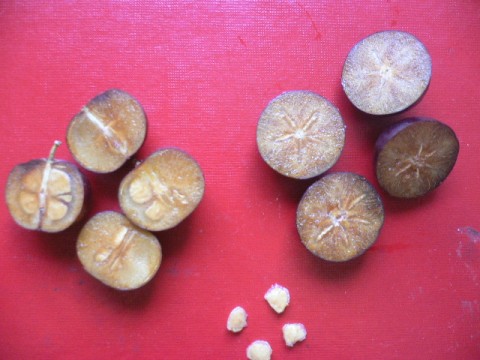 |
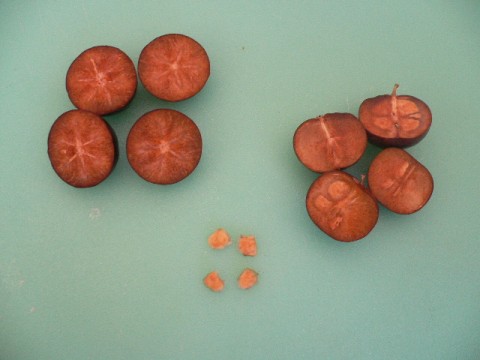 |
| Curry leaf (Murraya koenigii)
Indian Name: Kari Patta |
 |
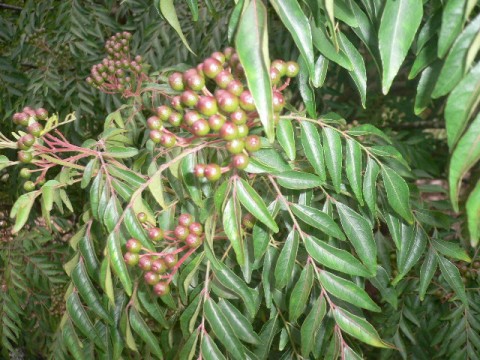 |
Tamarind (Tamarindus indica)
Family: Fabaceae (Pea family) Plant part used: seed pod Where grown: India, Indonesia, Africa Native to: Africa Use: Both unripe and ripe pods are used in various Asiatic and African dishes. The dark brown pulp of the ripe pods is mixed with water, squeezed, and strained to produce a sour liquid. The liquid is used as a flavoring agent in curries, soups, chutneys, and drinks. The pods are also consumed fresh, and young pods and leaves are used as a vegetable. The seeds are eaten and can be chewed like gum. Tamarind provides the distinctive flavor in Worcestershire sauce. Tamarind was used by sailors instead of limes as a source of vitamin C.
Petai (Parkia Speciosa)
Other names: Petai (Malaysia); Nejire-fusamame (Japan); Sataw/Sator (Thailand)
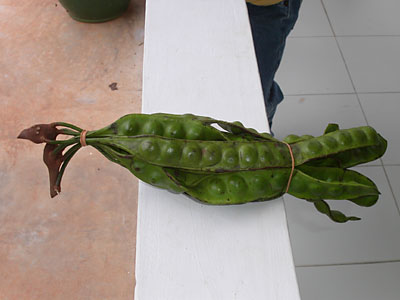 |
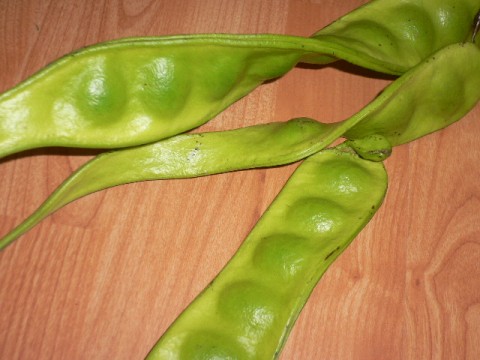 |
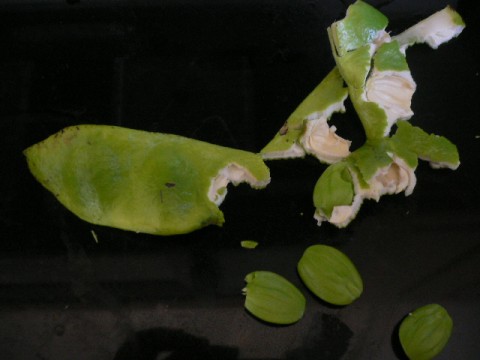 |
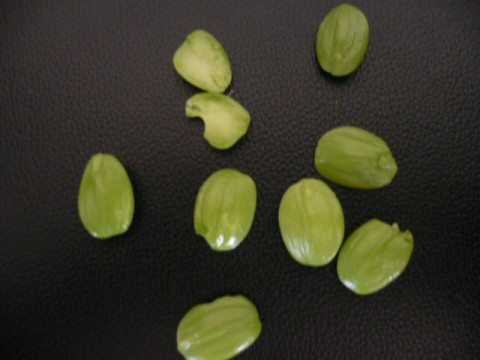 |
Star Anise (Illicium verum)
Peanut Butter Fruit (Bunchosia argentea)
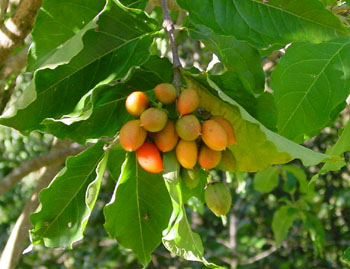
Guarana (Paullinia cupana)
 | A creeping, climbing vine, sometimes reaching large heights as it scales up taller trees. Leaves contain five leaflets. The tree bears small, white male and female flowers on the same tree. Propagation is done almost exclusively by seed, which lose their viability within 72 hours of harvest. Native to damp forested regions near the Amazon, Madeira and Tapajos rivers. Cultivated in Amazonia and other parts of Brazil, but rarely elsewhere. |
| Traditionally, seeds are roasted for several hours, then beaten into a paste before being smoked for a couple of months over a very low fire at which point they are ready for grating into powder. The powder is taken as stimulant, often with water or is used to flavor soft drinks and syrups.Guarana has a higher caffeine content than both coffee or tea. It is also used as a health-tonic, aphrodisiac, anti-helminthic, and a releiver of fatigue. | 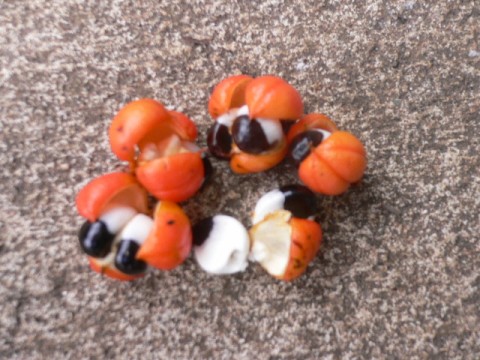 |
 |
Also known as pacay or guama. A fast-growing tree tolerant of diverse soils. Like all members of the bean family, Inga is a nitrogen fixer, which improves fertility levels in soil. This large tree produces long pods full of white, fuzzy coated seeds. Seeds commonly germinate while the fruit is still attached to the tree. Fruits are ribbed, cylindrical pods, straight or spirally twisted, up to three feet long and 1-2 inches in diameter. Much like cotton candy, the pulp has a sweet cotton-wool texture and tastes somewhat of vanilla ice-cream. Native to the tropical Americas. |
 |
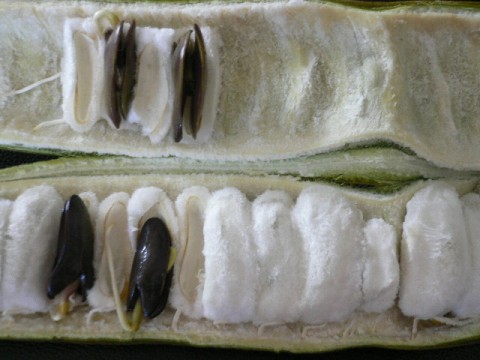 |
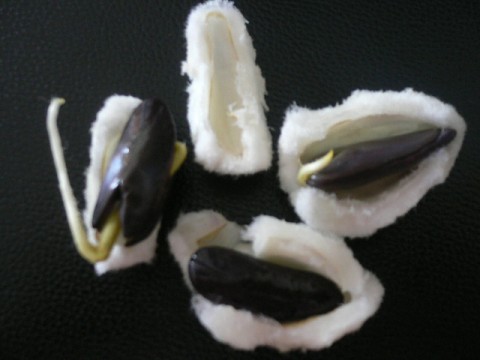 |
Jelly Palm/Butia (Butia capitata)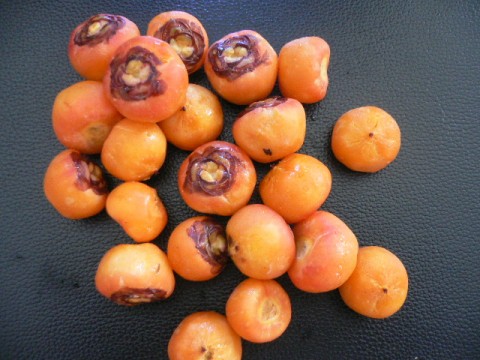
Betel nut (Areca catechu)
Peach palm (Bactris gasipaes)
Coconut (Cocos nucifera)
 |
The salak, or snake fruit, is native to Indonesia and comes attractively packaged in its own distinctively patterned, leathery hide. The dark-brown skin is tough, but surprisingly thin and easy to peel. Inside is a light-tan fruit divided into three or more lobes, usually with a single seed in the largest section. Salaks are not juicy which makes them especially convenient to peel and eat. The fruit has the firmness of a carrot and a distinctively agreeable flavour somewhat similar to a pineapple, but quite unlike any other fruit. Appearances, textures, and flavors are distinctive to the different varieties of salak: |
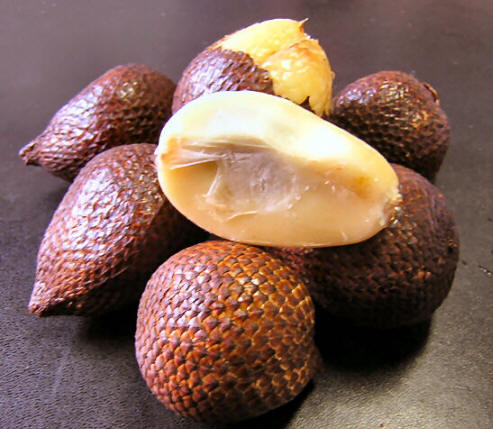
and mild flavor, similar to that of a pineapple. |
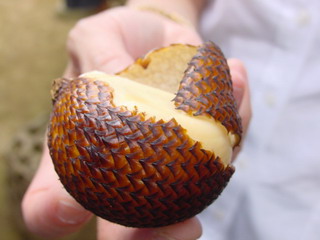
pronounced astringent flavor and tannic mouth feel. |
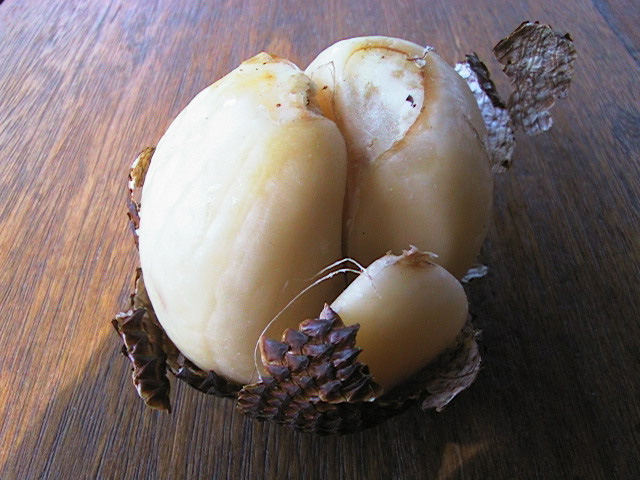 pineapple taste and only a hint of astringency. |
Small Fruit Trees
Medium Fruit Trees
Large Fruit Trees
Flowering ornamentals
Homepage